Page 1 of 1
'76 bus burnt valve
Posted: Thu Jun 27, 2019 9:29 pm
by EngineerMaxwell
Long time troller of these here forums, first time poster.
I installed some new, reworked heads ~12k miles back due to a sinking exhaust valve on cyl #1. I noticed some coke deposits on the piston heads (especially #1), but didn't think much of it and chipped and cleaned off as much as I could because a) I didn't have the bus for very long before having to shell-out the nearly $2k for heads and was eager as hell to get it on the road, and b) I didn't know any better at the time that I should have addressed that problem. I assumed that the deposits were likely due to the sinking valve/poor compression/incomplete combustion. I bolted the heads on and can truly say that I have experienced only a single love/hate relationship in my life (which I suspect is somewhat the norm in the air-cooled VW community).
Fast forward to today, and I have a burnt exhaust valve on #1, indications of combustion leaks at all cylinder/head interfaces, and coke deposits on all pistons and combustion chambers (especially #1).
I thought that I might just get away with replacing the problem valve and putting in new cylinders, pistons, and pins. After pulling the valve, I discovered that the seat is in fact compromised and I won't be just replacing a single valve. I also found out that I did not get the 3 angle valve job I was told I had gotten and paid for (I don't think...see pic below), and the valve/seat seals don't look concentric and vary in width.
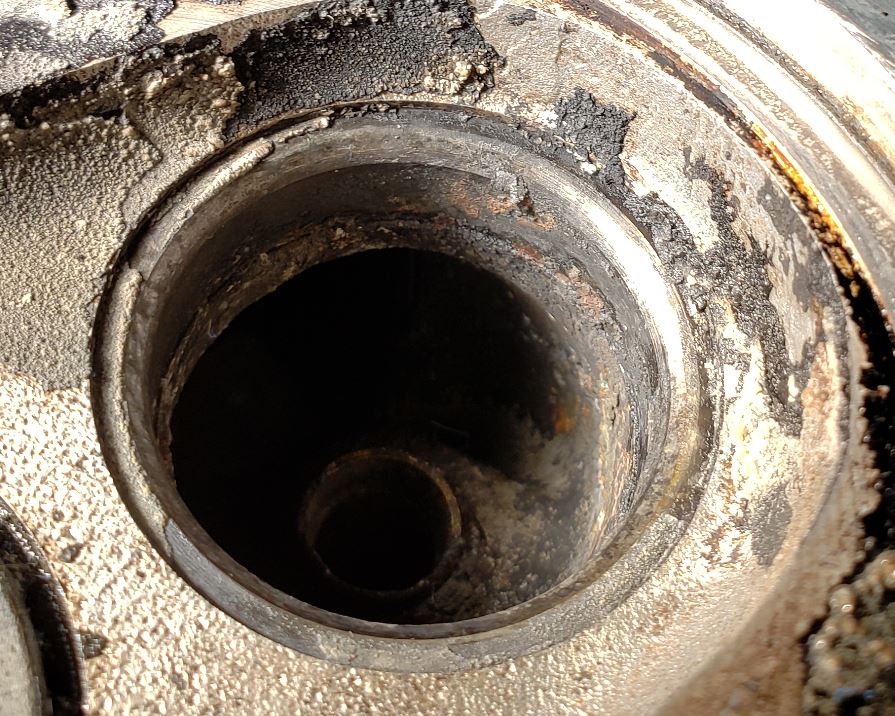
- #1 seat.JPG (180.77 KiB) Viewed 7804 times
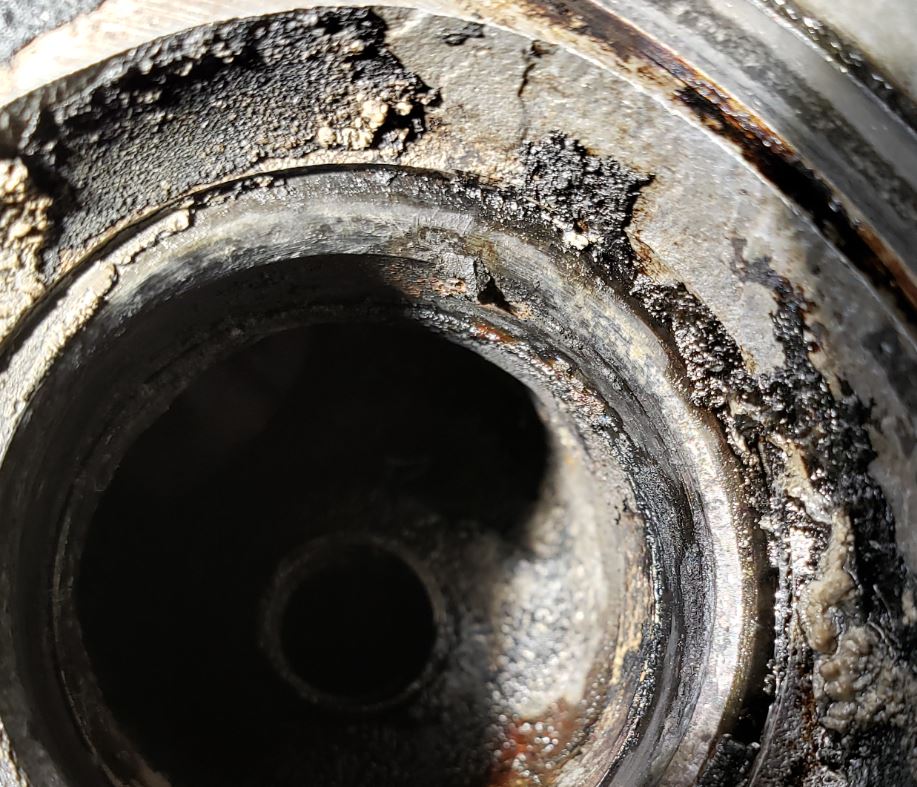
- #1 seat2.JPG (160.03 KiB) Viewed 7804 times
What would cause these combustion leaks?
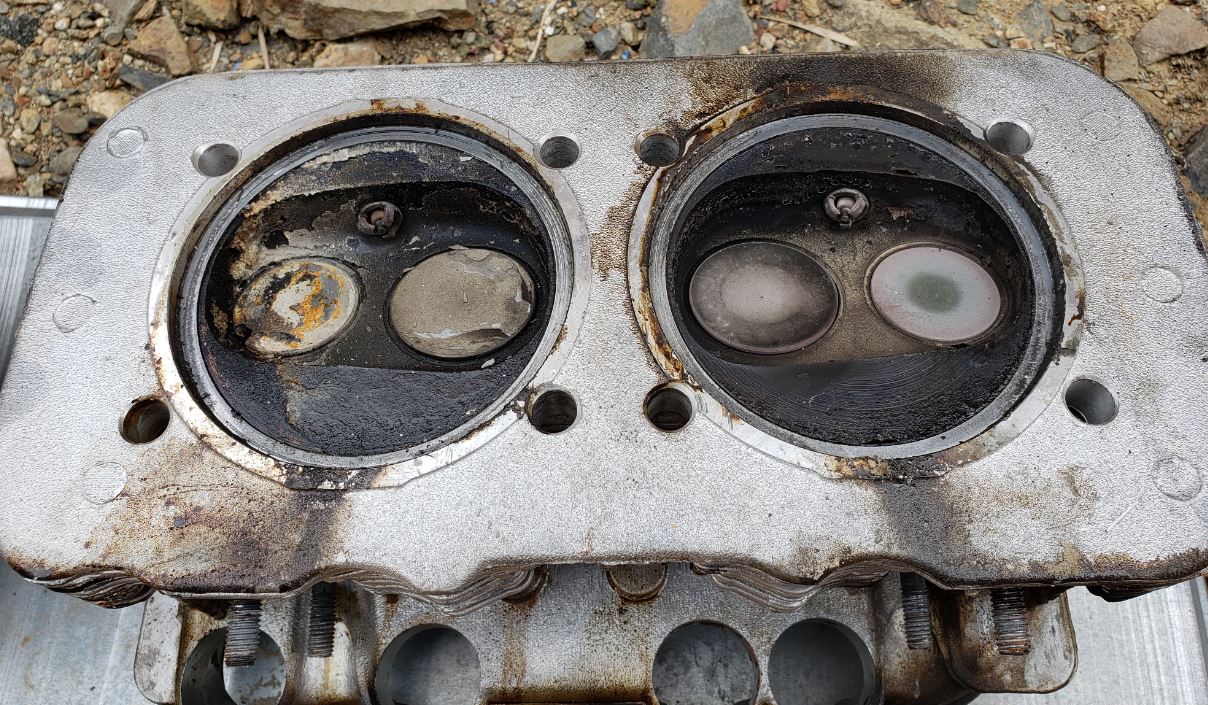
- head 1-2.JPG (285.38 KiB) Viewed 7804 times
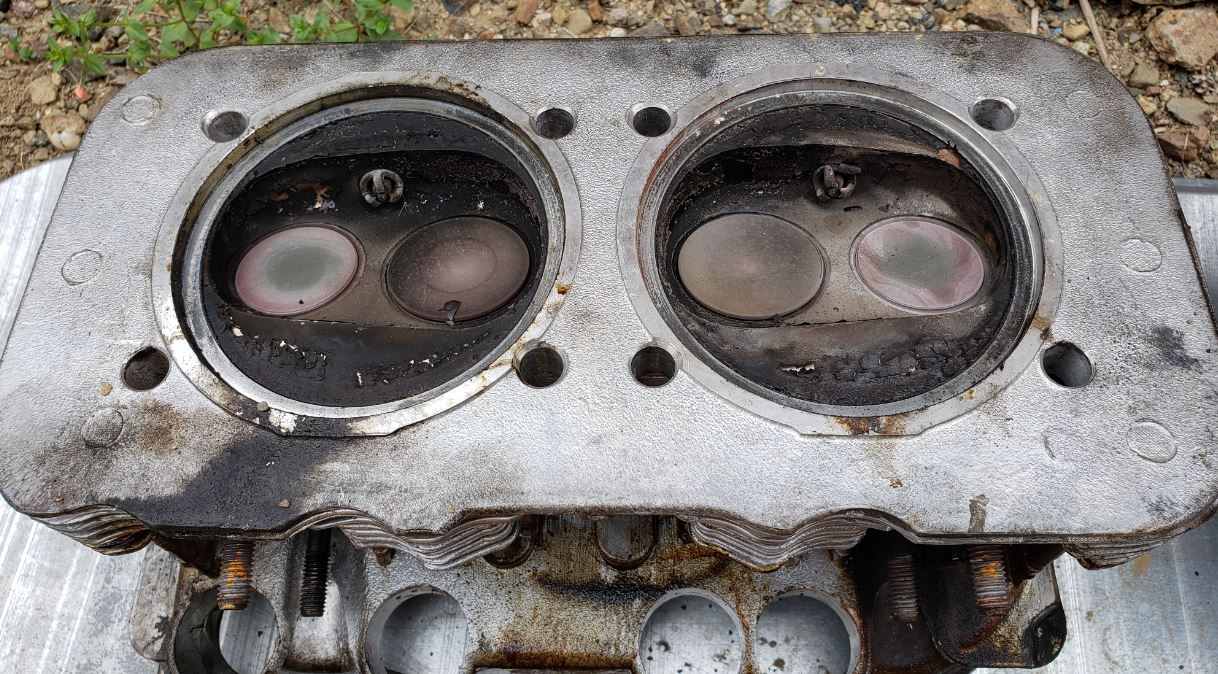
- head 3-4.JPG (256.79 KiB) Viewed 7804 times
I don't see 3 angles here. Am I missing something?
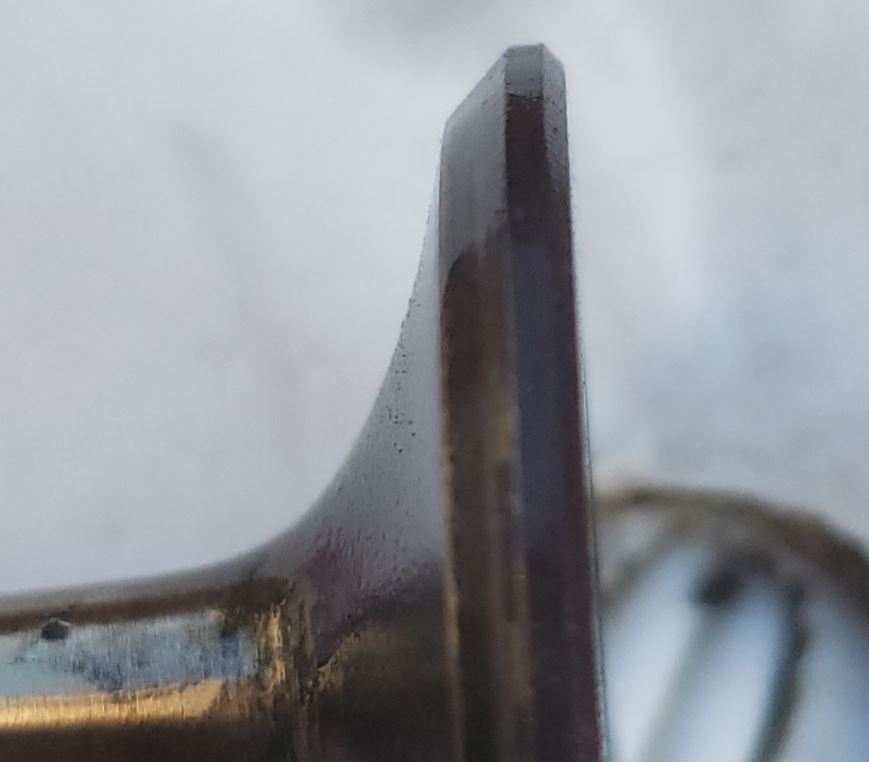
- 3 angle int.JPG (44.9 KiB) Viewed 7804 times
Are valve and seat concentric?
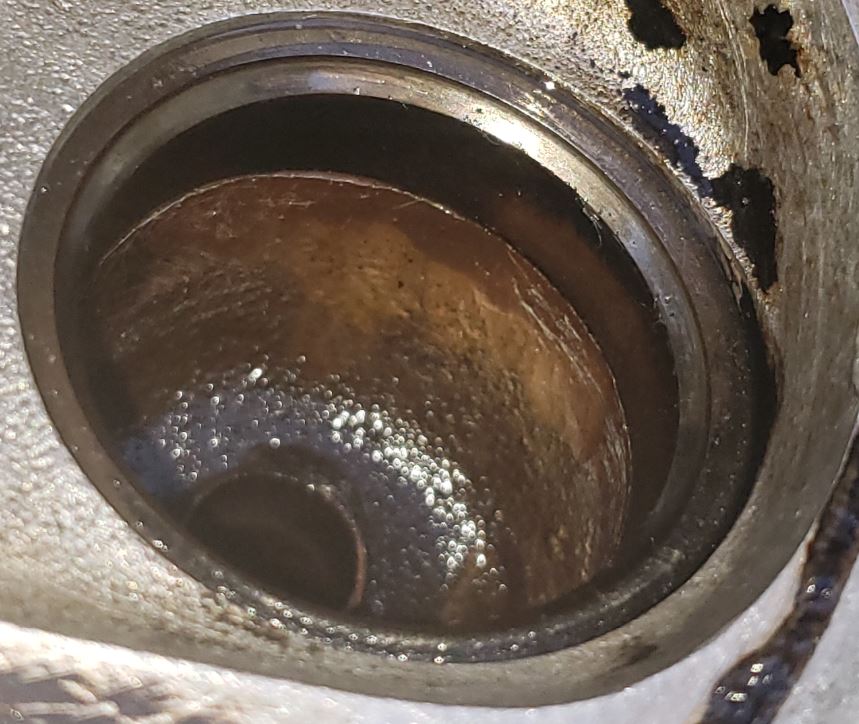
- Concentricity1.JPG (108.97 KiB) Viewed 7804 times
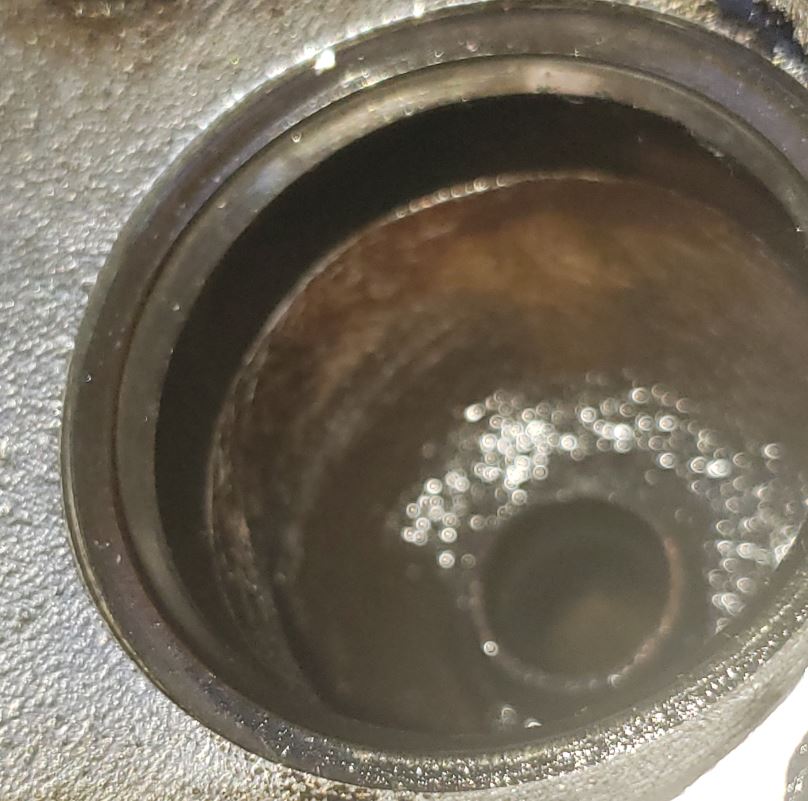
- Concentricity2.JPG (92.99 KiB) Viewed 7804 times
How much galling on valve stem is too much?

- Valve gall.JPG (27.92 KiB) Viewed 7804 times
Shame on me for not checking the valves at the time (they were built by a reputable "master of headflow"), and for not changing pistons/rings/cylinders when I found the coke deposits. How furious should I be with the builder? I don't want to be irrational, but I'm not happy.
Thank you
-Alex
Re: '76 bus burnt valve
Posted: Fri Jun 28, 2019 6:18 am
by SlowLane
The three angles in a three angle valve job are cut into the valve seats, not the valves themselves. IIRC, the Bentley manual has a good pictorial explanation of the why's and wherefors behind the three angle cut, and it is possible that your seats didn't require it to fine-tune the valve-to-seat contact width.
It's equally possible that your machinist was just lazy and counted on you either not knowing the difference or checking his work.
Small comfort, but it's unlikely that the absence of a three angle cut was the underlying cause of your head failure.
Welcome to the adventure.
Re: '76 bus burnt valve
Posted: Fri Jun 28, 2019 11:52 am
by EngineerMaxwell
SlowLane wrote: ↑Fri Jun 28, 2019 6:18 am
The three angles in a three angle valve job are cut into the valve
seats, not the valves themselves. IIRC, the Bentley manual has a good pictorial explanation of the why's and wherefors behind the three angle cut, and it is possible that your seats didn't require it to fine-tune the valve-to-seat contact width.
It's equally possible that your machinist was just lazy and counted on you either not knowing the difference or checking his work.
Small comfort, but it's unlikely that the absence of a three angle cut was the underlying cause of your head failure.
Welcome to the adventure.
I'm convinced that the valve job did not contribute to the burnt valve. I'm just disappointed in the quality of work done on the heads, especially for how much I shelled out.
I'm assuming (and I know that I should never assume) that a deposit chunk led to the valve's demise. What would cause all of the deposits in the combustion chamber? Rings are worn and allow oil to take part in combustion? I've had a hell of a time with the oil breather/PCV-ish valve. The breather-to-S-boot hose seems to have too much oil in it when periodically checked.
I guess I'm asserting that the rings are worn and I'm sucking oil through the air intake, and burning the oil which leads to deposits and unfortunately a burnt valve. I'm kicking myself in the @$$ for not replacing cylinders and pistons at the same time I replaced the heads, thus avoiding my current dilemma.
Re: '76 bus burnt valve
Posted: Fri Jun 28, 2019 11:58 am
by EngineerMaxwell
I'm pretty sure that I need to sell the bus (I need $$), but I don't want to sell it the way it is now. I'm so close to having the engine and transmission (newly rebuilt) dialed in and able to pass smog. Like, I'm. Right. There. But I can't afford to put any more $ into it.
Re: '76 bus burnt valve
Posted: Fri Jun 28, 2019 12:28 pm
by asiab3
Take a breath. You’ll be fine. The bus will be fine.
Did the old heads come off with a copper sealing ring? Was there evidence of combustion leakage on the old heads? If the old cylinders weren’t perfectly flat, the new heads might not have sealed perfectly from day 1.
Every internal combustion engine has a nominal amount of carbon in the combustion chamber, though our cars usually run hot enough to “self clean” the deposits out. So oil could cause the deposits, but so could an engine that doesn’t get hot enough. Did you monitor head temps, fuel economy, or anything else towards the end there?
Good on your for catching the issue and taking it off the road before the valve embeds itself in the piston and bends a rod or crankshaft.
The PCV valve was indeed ruptured a few years ago, did you ever replace it? It would certainly allow excess oil in.
Did you perform a compression test when the engine was running well before the issues? It sounded oh-so-nice at the New Years campout....
Robbie
Re: '76 bus burnt valve
Posted: Sun Jun 30, 2019 8:09 am
by Amskeptic
EngineerMaxwell wrote: ↑Thu Jun 27, 2019 9:29 pm
Long time troller of these here forums, first time poster.
I installed some new, reworked heads ~12k miles back
coke deposits on the piston heads (especially #1),
I assumed that the deposits were likely due to the sinking valve/poor compression/incomplete combustion.
today I have a burnt exhaust valve on #1, indications of combustion leaks at all cylinder/head interfaces, and coke deposits on all pistons and combustion chambers (especially #1).
I think you had a cascading failure that actually can be traced back to carbon deposits. Carbon deposits act like glowing charcoals that can lead to detonation (that you do not hear) that causes dramatic heat events under load that cause your engine to expand past its design limits which relaxes the head/cylinder clamping force when it cools down, which causes those leaks. Oddly, your 1/2 head shows an upper leak on 2 and a lower leak on 1 which makes me wonder about how squarely your cylinders seat on the case.
I don't know what to think about your valve job, and cannot see well enough to make assertions, but:
a) IF you see non-concentricity of the valve contact pattern on the seats that is evidence of a machining error.
b) a three-angle grind is critical to get the contact width to 2.2-2.4 mm on exhaust seat and 2.0-2.2 on the intakes. Any more and you are absolutely correct in your supposition that a bit-o-carbon can lodge on the seat.
ColinYesYouWillStepUpYourMechanicalBonaFides
(I checked my machinist's work by disassembling his work! That's a lowly Sharpie Marker proletariat Prussian Blue)
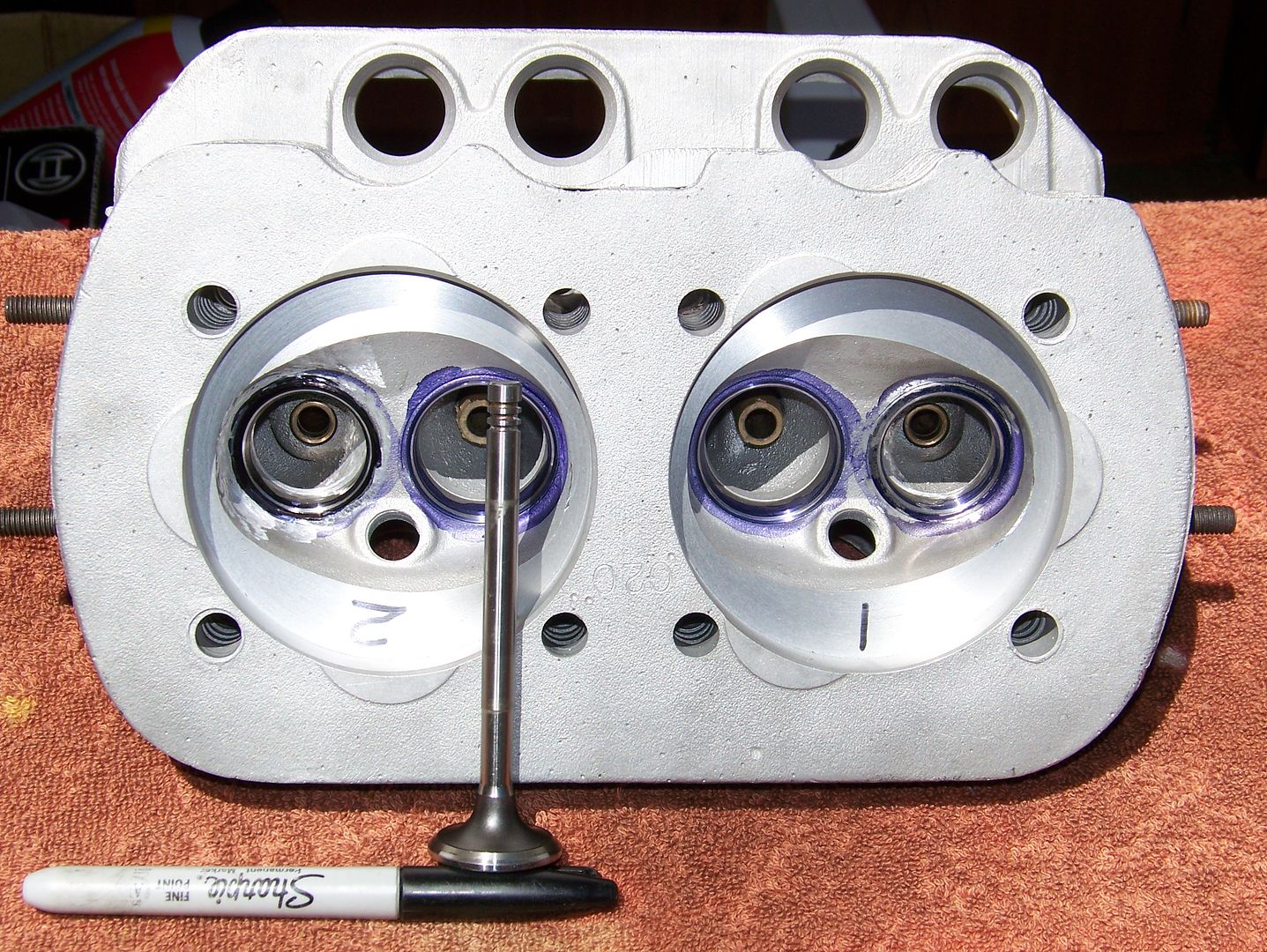
Re: '76 bus burnt valve
Posted: Sun Oct 13, 2019 1:15 am
by 72Hardtop
The leakage around the sealing surface is a clue that they weren't seating squarely to the head. Are they AMC heads? If so they will have a step in the head that takes the place of the no longer used gaskets.
Guides....how good were the guides?
The heads shows signs of running lean under load. What induction were you running? Dual carbs...EFI?
How many miles were on the engine at the time of incident? How many on the P/C's?
At min you should have replaced the P/C's along with the heads then re-set deck and then dial the tuning in.
